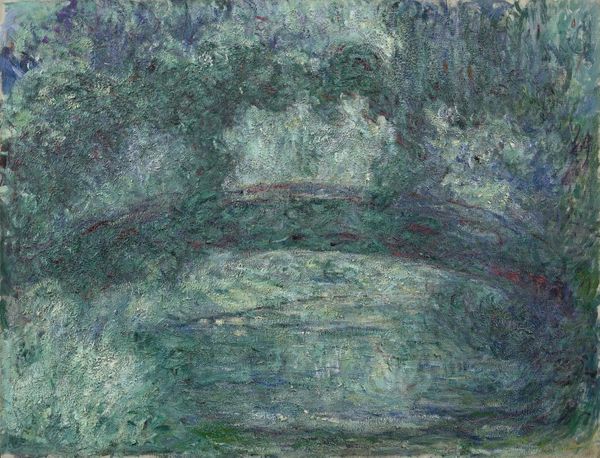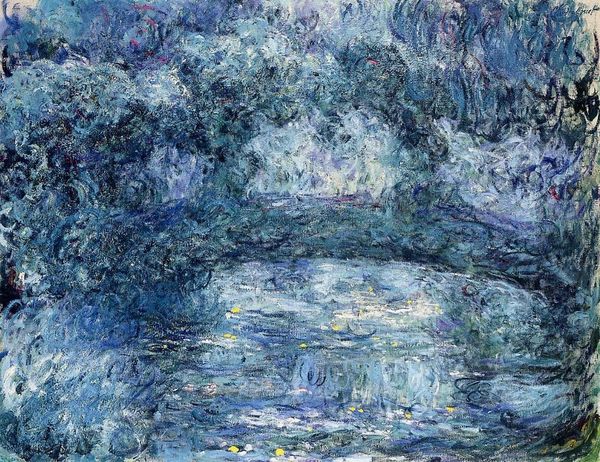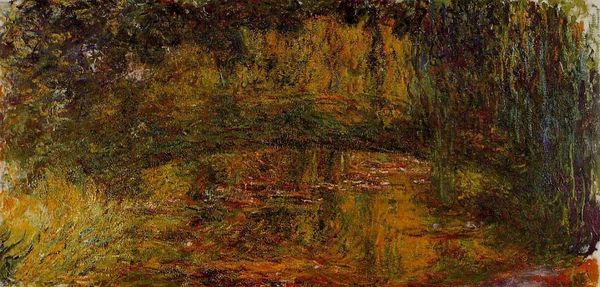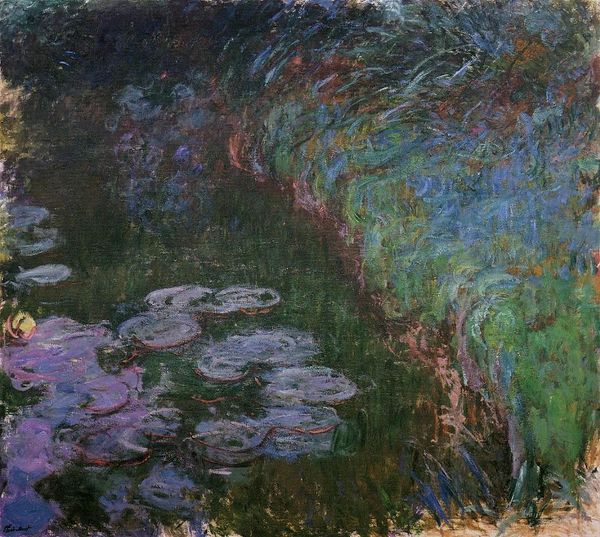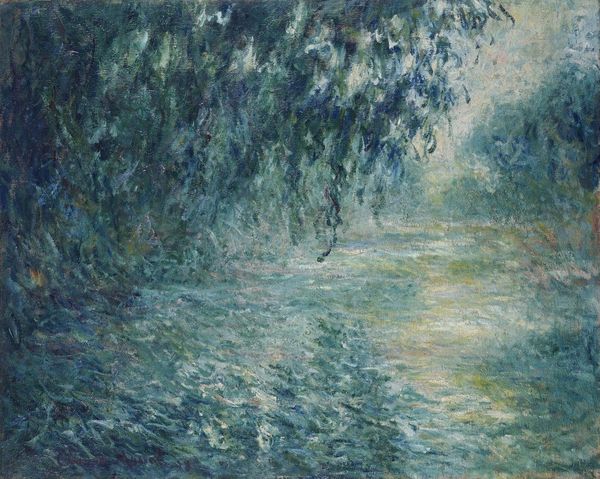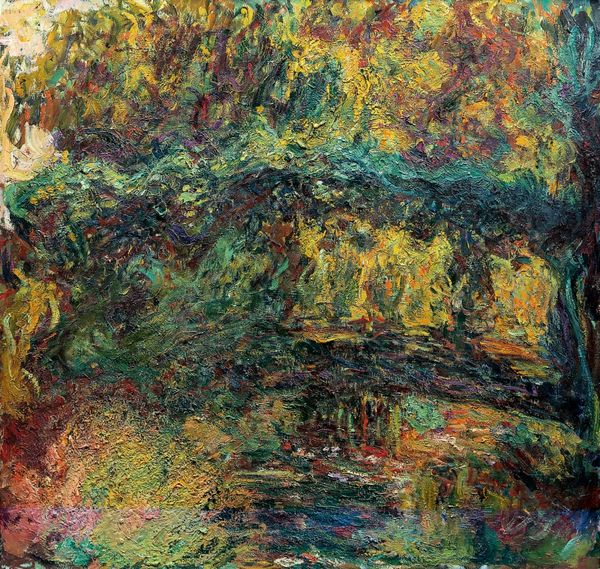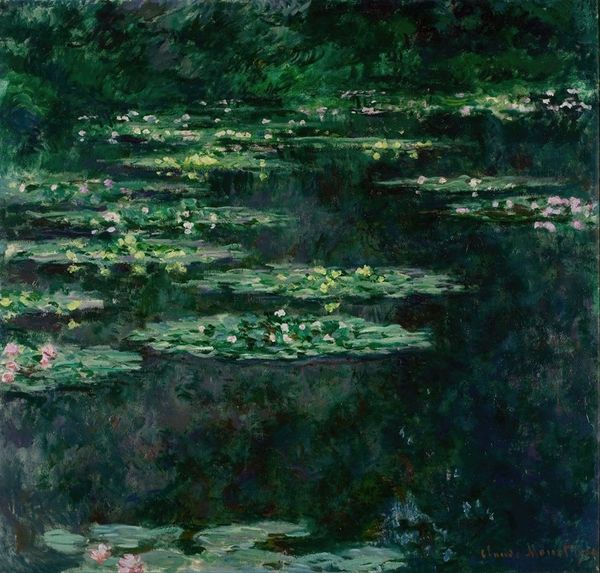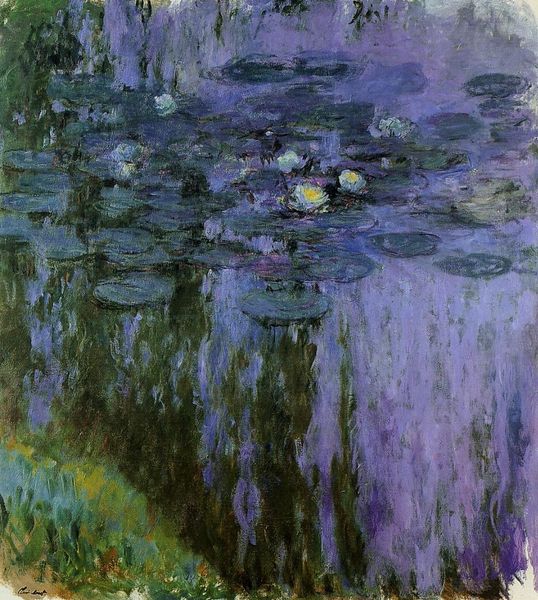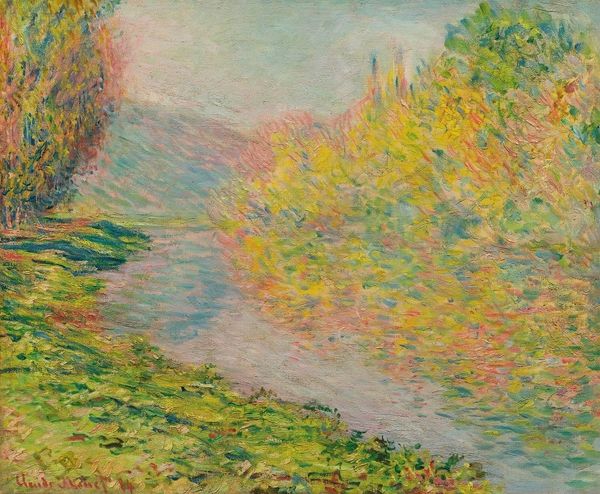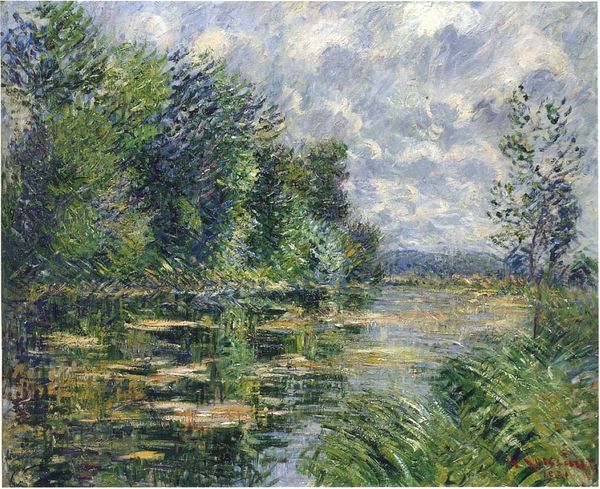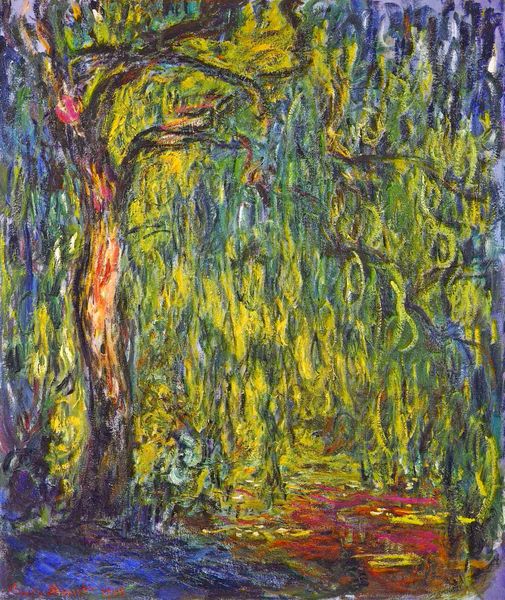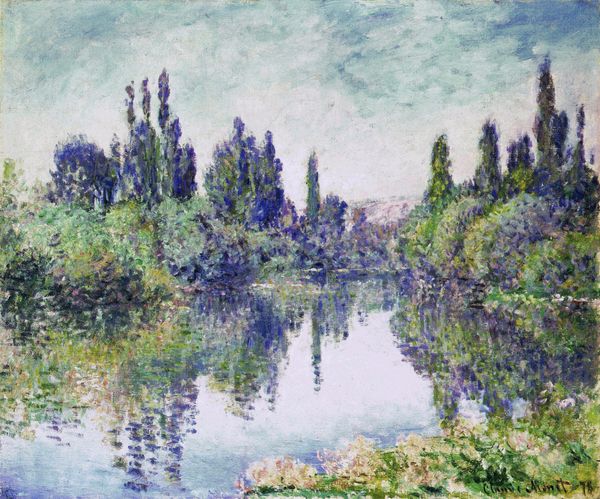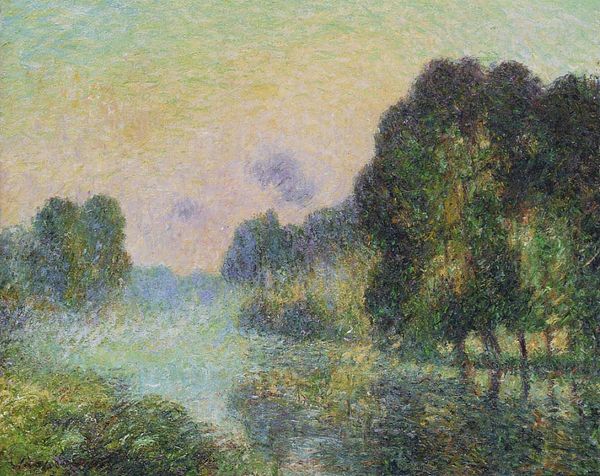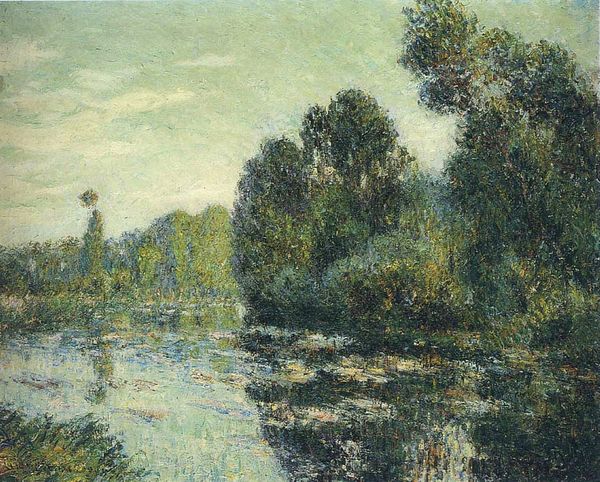
Dimensions: 92 x 74 cm
Copyright: Public domain
Claude Monet made "The Japanese Bridge" with oil on canvas, and while we don’t know the exact date, it’s now hanging in the Musée Marmottan Monet in Paris. Look at the blues and greens, all swirled and dabbed. He builds the image through a process of colour, a kind of call and response, which makes the bridge a feeling as much as a thing. Up close, you can almost taste the paint. It’s thick in places, like the dark curve of the bridge itself, and thin in others, like the water. The surface is alive, like a garden. See how he uses these little jabs and dashes of paint to suggest the play of light on water? It’s less about what he saw, and more about how he felt seeing it. Think of Cezanne, who was also obsessed with the process of painting itself. Like Cezanne, Monet wants to show us the world, but he also wants to show us how we see the world. It’s a reminder that art is never really finished, just abandoned.
Comments
No comments
Be the first to comment and join the conversation on the ultimate creative platform.
